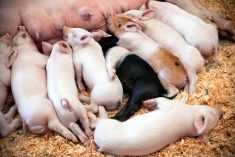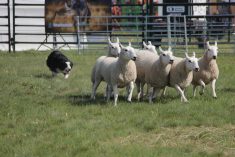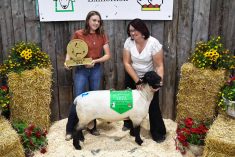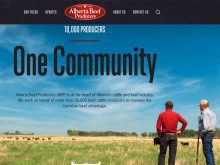REGINA – The Woytiuk family got up at 4 a.m. on sale day at Canadian
Western Agribition to prepare their Simmental cattle for the big event.
Most days they slept in until 5 a.m., but they expected this to be an
important day and wanted everything to be just right.
Their efforts paid off to the tune of $53,000 when a consortium of
Alberta and Ontario buyers bought their 11-month-old bull calf on Nov.
28.
The Woytiuks kept half the semen rights to continue using the genetics.
Read Also

Dennis Laycraft to be inducted into the Canadian Agricultural Hall of Fame
Dennis Laycraft, a champion for the beef industry, will be inducted into the Canadian Agricultural Hall of Fame this fall.
“People have been buzzing about him,” Laurie Woytiuk said. “This has
been the experience of a lifetime.”
They had hoped to get a good price for their show-stopping bull, but
ended up with double what they expected.
The bull descended from a South African sire, and was conceived with
semen obtained through an exclusive deal. The result was a good
outcross bull to enhance the genetic pool among Canadian Simmentals.
Laurie and Gerald Woytiuk and their son, Jody, own Crossroad Farm at
Shell Lake, Sask., where they entered the purebred Simmental business
seven years ago.
They had a mixed farm and wanted to try something new to rejuvenate
their lives. They now have about 70 Simmental cows, including some of
the big, beefy, cherry-red Fleckvieh type.
“It made things exciting again,” Laurie said. “We’ve had so much fun
and we’ve learned so much.”
When they got into the purebred business, they were determined to take
it seriously and spent considerable money on the best genetics they
could afford, believing their investment would quickly pay off.
They hold a summer field day each year and travel to fall shows.
They kept a commercial herd and used their knowledge from that sector
to build their seedstock side into solid range cattle.
“As commercial people, we get paid by the pound for the meat, so we
have to produce bulls that give them extra pounds of meat,” Laurie said.
Their string at Agribition received firsts, seconds and thirds.
“The audience is your judge,” she said.
Other sale toppers included a solid red $20,000 bull consigned by Randy
James of Arcola, Sask., that sold to Semex Canada of Guelph, Ont., and
a $15,000 solid black cow from Ken Lewis of Spruce Grove, Alta., which
sold to Mark Shologan of Rodreola, Alta.
In the commercial cattle show, the overall champion and reserve
champion pens of feeder steers and pen of five feeder heifers had
Simmental influence. They were exhibited by Bar Crossroads Ranch of
Edam, Sask., and Blair Stock Farms of Drake, Sask., respectively.
The heifer pens came from Maple Lake Stock Farms of Hartney, Man., and
Reed Andrew of Regina.
The champion pen of five feeder heifers went on to become overall grand
champion group.
In the replacement heifer classes, the reserve champion pen of five
open replacements was a group of Simmental-influenced heifers from
Kayla and Josie Bertholet of Hartney, Man.
The champion pen of 10 open replacement heifers was exhibited by
McKenzie Livestock of Weyburn, Sask., and were sired by a Simmental
bull.















